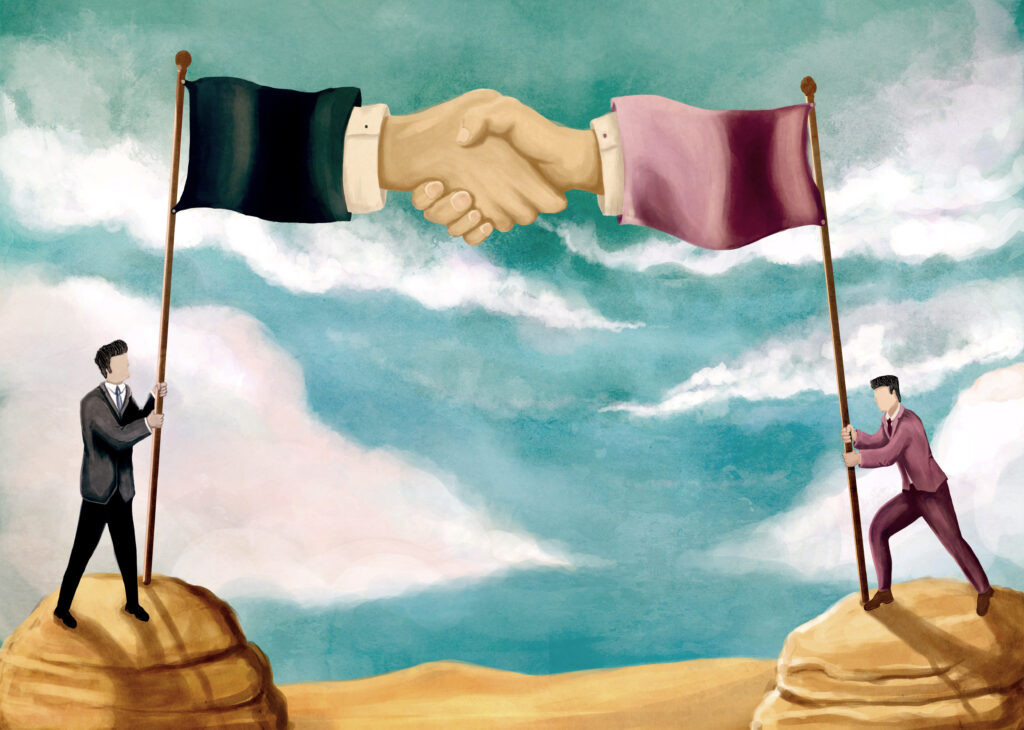
AI is No Longer Science Fiction, Neither are its Risks

Sinead Murphy, managing director at carrier MiC Specialty, discusses how artificial intelligence (AI) is changing the film and media industries.
With over 20 years of underwriting experience, Murphy shares how AI risks will impact E&O, cyber, and other policy coverages. She also discusses how this new technology is affecting the relationship between brokers and carriers. This conversation comes nearly a year after the Screen Actors Guild went on strike for reasons that included AI being used to replace actors’ performances.
Read the Transcript
Sinead Murphy: These actors and these employees just want an industry where the technology supports but doesn’t replace the human talent. The brokers are definitely nervous that, you know, this could be an implication to coverage from the carriers. It’s here to stay, and it’s going to be an exciting ride. We just have to wait and see
Zach:
Welcome to the Leader’s Edge Podcast. I’m Zach Ewell, content producer here at Leader’s Edge, from the grim fictional antagonist of HAL 9000 in 2001: A Space Odyssey to the melancholy depiction of Joaquin Phoenix’s virtual assistant Samantha in the film “HER” movies throughout history have depicted stories surrounding humans interacting with artificial intelligence. However, now that AI is no longer science fiction, many in Hollywood have begun using it as a tool to make movies, the ethics and risks associated with utilizing aI have not come without harsh criticism. Just last year, the Screen Actors Guild went on strike over labor disputes regarding concerns about AI replacing actors to learn more about the insurance implications and risks associated with media and movie studios utilizing AI. I spoke with Sinead Murphy, Managing Director of MCI specialty, an insurance carrier that specializes in media liability coverage.
Zach: Sinead, could you tell me about your first experience seeing generative AI in media?
Sinead Murphy: Absolutely. I think the first time I ever saw it was at a media law conference. It was super exciting. We had some attorneys there that had some examples of materials that have been created. And I just thought it was mind blowing, the capabilities of this computer program in terms of what they could generate in 10 seconds with very little creative input from the user. So that to me, was mind-blowingly amazing! In terms of the efficiency, but also very scary in terms of what we would consider the due diligence of what’s created, because it felt like it was so instant that it was basically too good to be true. So that was kind of my first experience. And then, I went away back to my office, and I was gonna try this out for myself! So I kind of signed up for ChatGPT and Claude and played around with those two systems. And, yeah, it was a lot of fun. I started using them for within my capacity here at MIT specialty, I underwrite a lot, but I also prepare a lot of contracts and presentations. And just for ideation to set up the skeletal basis for these contracts, or for whatever I’m trying to put together. It’s amazing to have something that gives you a little boost, as long as you can just use it, which is difficult, but just use it as a scalable basis, not as the final product. It’s very persuasive, it’s very slick. You can feel like this is better than you can do yourself, and that’s the key. You always have to think that you should be the person driving the creation, not the AI, persuading you to use what they’ve given you.
Zach: So what are your clients thoughts on AI in media production? Are they actively experimenting with it? Are they hesitant, mixed reaction, maybe? And to your knowledge, is the market asking coverage for it currently?
Sinead Murphy: The clients, like all of us, are in this state of initial experimentation. They’re trying to figure out what policies they need to implement within their organization to control the use of AI. It’s a very dangerous thing. I think they’re excited about the efficiencies, but also very nervous about the implications of misuse of AI. I don’t see a lot of the activity as of yet, we’ve started as a carrier, as our other carriers have as well. We’ve started asking the question, are you contemplating the use of generative AI, have you used it within we do a lot of project specific policies for productions. I have not had any affirmative “Yes, we’re using it to kind of dive into a little bit deeper!”, so I think everyone’s just being very cautious. I mean, it’s an excellent tool to use within your company. So imagine there are many media companies that won’t be incorporating it into their processes. We have seen the market asking for coverage, definitely people, the brokers, are definitely nervous that, this could be an implication to coverage from the carriers, in terms of our position. I’m an Eno underwriter, so we are covering the content of a production of publication, or any type of content of the media company we’re insuring. So you have a company, they either create their own original content, which we review in terms of what other processes, how experienced is the company, what sort of legal reviews are being are, does the company have to review and clear this original content, if it’s third party content, we want to know how that’s licensed, what sort of instances have been obtained From the copyright owner of that third party content, if it hasn’t been licensed, then we may have issues with that content and excluded but in terms of the AI content, that’s something new, because it doesn’t feel completely original, and it’s not licensed from a third party. So we’re really going to have to work on figuring that out with our insureds as they start to use that content more frequently.
Zach: So my next question, you have over 20 years experience of media, underwriting and management experience. What have been some past innovations and disruptions to media risk that you have seen, and is AI the largest that you’ve seen yet?
Sinead Murphy: Oh, the digital transformation was a massive shift. We’ve gone to global distribution in seconds of media and content where, back in the day, we could really narrow down distribution to localities, and that’s just not possible anymore. Now, there are things that drive that, depending on how successful it is, it’s probably not going to get that much distribution. So things naturally filter out into their into the distribution that they’re worth. The user generated content was a big shift, where anyone can produce content or be a marketing person for a highbrow brand. The emergence of fake news has been an issue. The pandemic was a huge shift in terms of how people consume media. The actor and writer strike was a huge disrupter. AI is a huge game changer for media companies.
Zach: You mentioned sag AFTRA. So last year’s sag AFTRA strike struck a chord with many as AI being used in Hollywood became a big issue. Specifically, some argued about studios possible use of scanning the faces of actors in order to generate performances of them digitally. Do you believe the risks of litigation and copyright infringement could grow as more media companies begin utilizing AI within their productions?
Sinead Murphy: These AI companies are just stocking up and filing every piece of data they can get their hands on and creating these databases. If you put in a specific enough request for content, the output is going to be fairly identical to something that already exists. That is frightening, and that’s a copyright claim potentially. But there are a lot of positives with regards to AI, it’s going to help immensely with efficiencies. It’s going to help with reshooting a scene, the digital scanning is going to allow them to adjust the facial expression without having to reshoot the whole scene. That means, hopefully productions will take less time to film. There’ll be less delays. Actors can work more because the production won’t be delayed. So there are a lot of great benefits to AI, but these actors and employees just want an industry where the technology supports but doesn’t replace the human talent.
Zach: So as I understand it, generative AI, text to speech, applications such as dall-e and runway have the opportunity to massively disrupt the budgets and workflows for film and media companies. I assume, as the workflows of these productions shift, so will their risks? What areas do you think will be heavily affected by the use of AI and media? Will this impact cyber or, you know, policies primarily?
Sinead Murphy: The integration of these tools is going to represent a huge technological shift. Whilst this offers a lot of benefits for creativity and efficiency and cost reduction, there are challenges. It’s going to change everything. We don’t even know what those policies and procedures should be yet. We’re going to have to test them and figure out, as time goes on, what works and what doesn’t work. We don’t even really know what it’s capable of. We’re going to have to be in close contact with the attorneys in this area, with our claims staff, figure out what are the valuations for these claims. Claims, we’re going to have to speak to our reinsurers about these claims, and that could lead to an industry situation where we have to go beyond asking the question, do you use it? There may have to be a separate retention, there may have to be sub limits. There may have to be exclusions. We just don’t know yet. But what we do know is we need these media carriers to be in business, because the media companies need insurance. So we have to be able to protect ourselves, too, in the event that this does turn into a very litigious area that we have to pay significant defense costs to figure out.
Zach: I’d really like you to just if you could, if you could paint a picture for our listeners, just on some specific areas that AI will change within Media Production.
Sinead Murphy: I mean, every company needs to figure out how to maximize efficiency and still stay true to their core business. But it would be impossible not to include generative AI into the process to increase efficiency, with regards to script writing, like, again, ideation this, it’s an ideal tool to, like, throw some scenarios into and see what sort of responses or what sort of ideas come out of that. With Visual Effects, it’s definitely going to create huge efficiencies in terms of how productions are edited, how backgrounds are added, how characters are added in there. if there could be many background characters, we could have speaking parts that are generated by AI, the pre production, again, storyboard and casting AI might be used to, you know, I need a police officer in this movie who are the most successful actor or police officer actors in the history of in the recent history of film. So it may be even with regards to the casting, you kind of approach AI to get the ideas of who to put into those productions. I’d also read recently, which I thought was funny and kind of scary, that it was going to start being used to visually analyze the watchers of productions and films to gage from their reactions, what parts of the movie were successful, what
like, what parts of the script intrigued people, made them happier, make them cry. So I thought that was interesting, too. And yeah, post production as well. We’re going to be using it to, you know, edit out the production at the end,
for marketing. A lot of news publishers, and mostly news publishers use it to, and I find this intriguing, but they’ll use AI to kind of tidy up their articles for every social media platform that they’re going to distribute, kind of advertise into. And it’s incredibly successful at picking the right title, the right kind of shortened version of the article that will kind of work in that format. So you know, that would have probably taken an employee an hour to do, and they probably still wouldn’t have maximized the use of keywords and the way that AI can So, yeah, I think it’s here to stay, and it’s going to be an exciting ride.
Zach: We just have to wait and see it’s it’s scary, exciting, and it’s hard to it’s hard to think about.
Sinead Murphy: It’s exciting when you think that it’s in the right hands. It’s terrifying when you think it’s not in the right hands. So as ever for us, we’ll always be looking at who is the insured and you know, what is the professional capabilities of the company we’re insuring? And I think that’s going to be key.
Zach: That was my conversation with Sinead Murphy, Managing Director at mic specialty. I hope you enjoyed it.
To listen to more of our podcasts, go to leadersedge.com, or find us on SoundCloud, Spotify or Apple podcasts.




